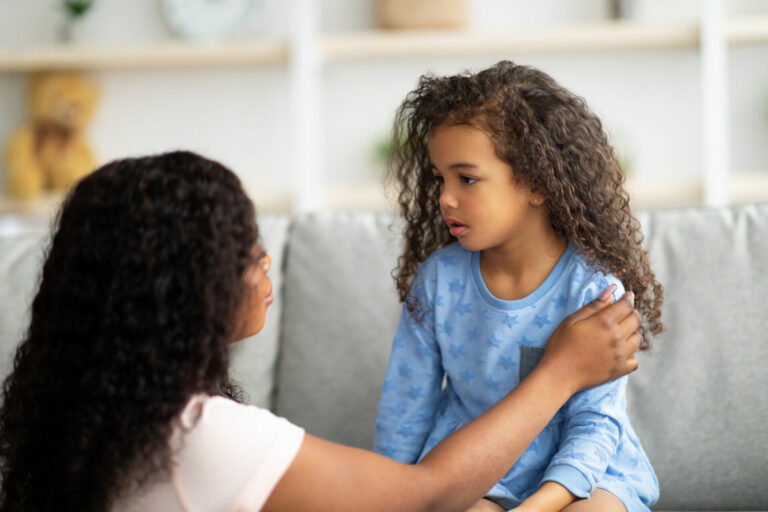What is a parent or caregiver to do when their children chronically misbehave, even if the misbehavior is a result of trauma? The short answer is to follow the regulate, relate, reason framework (Info NMT, 2020). Yes, even if consequences are eventually in order.
Regulate. When children misbehave, parents and caregivers first need to evaluate whether children are regulated. Robyn Gobbel (2020) says, “regulated connected kids who feel safe behave well,” so chances are, a misbehaving child is not feeling regulated, or connected. A dysregulated kid has a “’flipped lid,’” or a disconnected thinking brain, meaning they are not able to logically process in the current moment (Whittaker, 2019). Assigning consequences, or even punishing the child in this state will have no effect, as the child cannot connect cause and effect. They first need to be grounded. Grounding/regulating activities can include exercise, deep breathing, mindfulness, or taking a break to do something nutritive such as eating a snack. When the child is regulated and able to think clearly and calmly, then parents can proceed to the next step.
Relate. Children from hard places have often received injury (physical, mental, spiritual, or emotional) from caregivers. They need to know that they are safe with caregivers before they can receive feedback. Therefore, it is important to help a child feel safe by building trust, yes, even in cases of misbehavior (Purvis, Cross, & Sunshine, 2007). Kids need to know that there is structure, that caregivers will follow through, and that caregivers want the best for them. Sometimes parents need to lead with the statement, “You know I want the best for you” before even broaching a topic of misbehavior when the child is in a regulated state. The caregiver who relates to the child is able to not only provide safety to the child, but also see why a behavior might have emerged.
Parents and caregivers who relate to their children can ask questions: Is there an underlying need? Great! They can fix it. Does the child need extra support to engage in the preferred behavior? Wonderful. The parent can co-regulate (Gobbel, 2021). Is a consequence really needed? Or will connecting and practicing a re-do create pathways for change in the child (TBCH, 2017)? Often, even consequences have a dysregulating effect. Helping children do the right thing, on the other hand, can have a regulating effect.
Relate. When are consequences appropriate, then? Consequences are appropriate when they relate to the problem at hand, and when children are in a regulated, related state to receive them. Did the child break a cup by purposefully dropping it on the floor? An appropriate consequence might be to help the caregiver clean up the mess. Did the child break a rule at school? An appropriate consequence would be to let the school hold the child in for detention at lunch time, as it makes sense that the child “owes” the school time for disrupting class. Children might need scaffolding, too, as children from hard places are often not their developmental age, meaning they need consequences simplified so as to remain in their window of tolerance and keep from flipping their lids. Consequences need to be child-centered, rather than blanket, as children tend to perceive blanket consequences as punishment.




